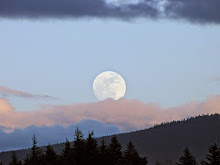
Oregonian reporter Michael Milstein has a strange sense of perspective on Oregon snow.
Two years ago after a harder than usual January snow fall, Milstein wrote:
If the winter wonderland that gripped Portland this week took us by surprise, maybe it's because heavy snows have grown scarcer.
The past 25 winters brought barely more than 3 inches of snow to Portland on average, the lowest figure on record, according to National Weather Service data. The 25 winters before that average 5.5 inches of snow and the 25 before that 9.5 inches.
The bottom line, weather experts say, is the Northwest is getting warmer, turning more of its snow into rain. Portland is especially sensitive to that trend because the area usually sees snow only when temperatures are very close to freezing.
. . .
Although it may disappoint kids who enjoy snow days and good sledding, the snow will probably grow rarer still as warming continues--a trend scientists believe is linked to escalating greenhouse gas concentrations.
. . .
Since 1969, the biggest accumulation was 14.1 inches in the winter of 1992-93, and that stood out among other annual snowfalls in that era. No more than 2 inches of snow have fallen in eight of the past 10 winters. It would have been nine of the last 10 winters without this week's snowstorm."
(Oregonian, "As the region gets warmer, more rain than snow falls, a trend that some scientists link to rising greenhouse gas concentrations," January 20, 2007, pages A1 and A7.)

In December, 2008, snowfall measured at Portland International Airport was 18.9" (6 times more than the 3" average). Despite Milstein's report that heavy snows are "scarcer" and likely to grow "rarer", the uncommon 2007 winter, followed by the record setting 2008 winter, didn't set him thinking about possible problems with the climate models he has been reporting.

Rather Milstein's front page article today is about bad consequences of pollution caused soot making the snow pack melt faster thereby decreasing water supply at critical times in spring and early summer.
The soot, almost invisible in the snow, absorbs more sunlight, heating the snow and melting it as much as a month earlier in spring, amplifying the effect of already rising temperatures, according to a new study by scientists at the Pacific Northwest National Laboratory in Richland, Wash.
The warming effect of the soot -- known to scientists as the "dirty snow effect" -- melts away as much as 2 inches of snow in some parts of the West before it would have melted otherwise, computer modeling showed.
That erodes mountain snowpacks that Western farmers and cities have long relied on as a critical reservoir of water. It leaves less snow to melt and fill rivers later in the spring and early summer, when water is most needed for agriculture and thirsty cities.
But, there are some major scientific caveats to the study Milstein trumpets in this story. Milstein does report on the caveats, but shoves them down in the text so they don't appear on page 1 but on page 6. The last three caveats don't appear until the final three paragraphs of the 22 paragraph article.
Caveat 1: The amount of soot in the atmosphere hasn't changed much in recent years. [Caveat to the caveat: that could change due to Asian (read: China) sources]
Caveat 2: Since the study is based on computer modeling, and not actual conditions, it is "not precise", and according to Phillip Mote, Washington state climatologist, it "cannot measure specific consequences", and is "an interesting attempt to demonstrate the influence from soot". Mote continued, "The emissions of soot and their changes over time are not well known, and consequently, their role in the observed changes in snowpack and streamflow over time cannot be quantitatively determined."
Now for the last three paragraphs:
Caveat 3: What is the impact of soot from forest fires? (Oregon, not to mention California, has major forest fires most years) Uh, no one has studied that.
Caveat 4: What about dust [or particles from the sand and gravel that Oregon uses instead of salt for de-icing and traction on snow]? Not studied yet.
Caveat 5: What impact does snow darkening on its own due to the normal course of melting cause? Again, not studied.
So, soot causing snow (which wasn't supposed to be here in such massive quantities) to melt faster may or may not be significant. But, no one has done real life studies--only computer models. And those don't take into account other major variables which cause snow to "darken".
Milstein and the Oregonian think the study is front page news, but the caveats not so much.

No comments:
Post a Comment